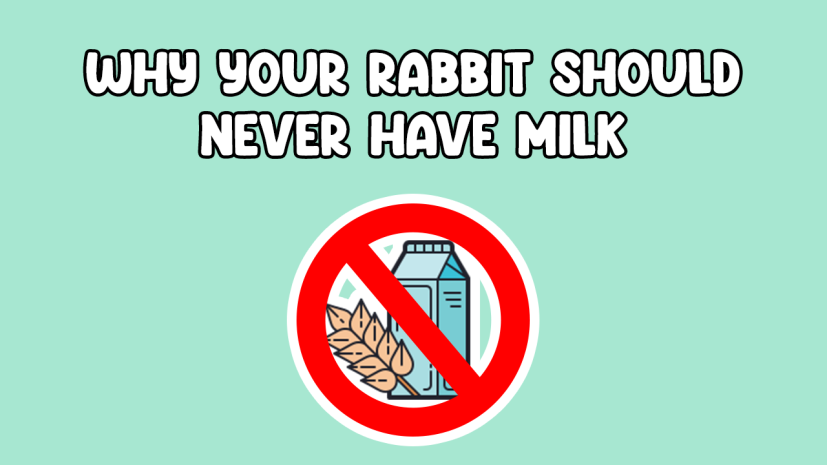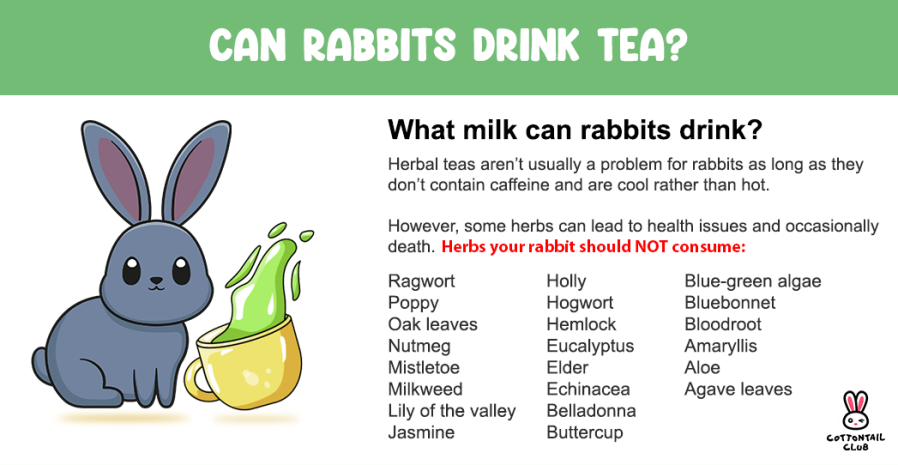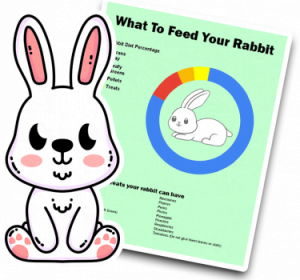
If you’re a rabbit owner, you may have wondered whether giving your furry friend a sip of milk is safe. After all, milk is a common household drink that many of us enjoy daily. However, regarding rabbits, things aren’t always that simple.
Is it safe for rabbits to drink milk? Giving milk to rabbits is not recommended as it can negatively affect their digestive system. This is because adult rabbits are lactose intolerant, so they cannot properly digest milk products.
Rabbits are herbivores, which means that they primarily eat plant-based foods. In the wild, they survive on grasses, hay, and leafy greens. As such, providing your pet rabbit with a well-balanced diet of fiber and nutrients is essential.
While water should be their primary drink, many rabbit owners may wonder whether milk is a good option. In this article, we’ll explore the topic of whether or not rabbits can drink milk.
As mentioned earlier, water is the primary drink for rabbits. It’s essential to ensure your rabbit can access clean, fresh water.
Dehydration can be life-threatening for rabbits, so they must drink water regularly. In addition to water, rabbits can consume other liquids like herbal tea, coconut water (Less than 10ml), or diluted fruit juice, but only in small amounts.
In short, no, rabbits should not drink milk. While rabbits can digest small amounts of lactose, their digestive systems are not designed to handle the high levels of lactose found in cow’s milk.
Consuming milk can cause stomach upset, diarrhea, and other digestive issues in rabbits. Additionally, some rabbits may be allergic to dairy products, which can cause severe health problems.
Baby rabbits should only drink milk from their mothers and not other animals like cows.
Homemade rabbit milk replacer is an affordable and healthy option for providing proper nutrition to baby rabbits. It can be made with all-natural ingredients and tailored to meet the specific nutritional needs of your bunnies.
The ingredients are blended together to make a smooth mixture that can be fed to your baby rabbits through a clean bottle or syringe.
As mentioned, rabbits are not designed to digest cow’s milk. The high levels of lactose in milk can lead to bloating, stomach pain, and diarrhea in rabbits. This can be very uncomfortable for your pet and may require veterinary treatment.
Additionally, some rabbits may be allergic to dairy products, which can cause anaphylactic shock, a severe and potentially fatal allergic reaction.

If your rabbit was mischievous and sneaked a drink of milk, or you gave them a taste of milk without knowing it wasn’t good for them, don’t panic! While it’s not good for them, a taste one time isn’t going to harm them too much.
If they’ve had a lot of milk, or you’ve been giving it to them regularly, it’s important to stop now and it’s worth getting them checked by a vet. In particular, if you’ve noticed any changes in your rabbit’s toilet habits, eating habits, or general behavior and they’ve had a lot of milk, get them straight to a vet to get checked out.
How much water your rabbit should be drinking each day depends on a lot of factors, such as their size, temperature, their activity level, and what they’re eating (leafy greens provide some hydration). Vets at First Vet recommend that a rabbit drink: “50 to 150ml per kilo (of their body weight) per day”.
While milk is not suitable for rabbits, there are several alternatives that you can give them. As mentioned earlier, water should be their primary drink, and it’s essential to ensure that they have access to clean, fresh water at all times.
Additionally, you can give your rabbit herbal tea, diluted fruit juice, or coconut water in small amounts. These drinks provide some variety to their diet, but it’s important not to overdo it.
Some herbal teas can be ok for your rabbits to have a little taste of, but they shouldn’t be given regularly. Any herbal tea you offer should be free of caffeine and contain no tea leaves. Ensure the tea contains no harmful ingredients or additions.
Some herbal tea options include:
If you do choose to give your rabbit herbal tea, always make sure it’s not hot and that you only give a minimal amount. If you’re not sure if herbal tea is safe for your bunny, you can always check with your vet (it’s always better to be safe).

Baby rabbits are called kits or kittens. They’re born completely vulnerable and are hairless, blind, and deaf at birth. They stay in their nest with their mother for around three weeks, and she feeds them rich milk once a day.
Since rabbits only feed their young once a day and are often left alone during the day, people can think they’ve been abandoned or that their mother isn’t caring for them.
This happens especially in the wild if people come across kits alone. However, most of the time, wild kits should be left alone, and their mother will return to them.
Whether it’s in the wild or a domestic setting, hand-rearing a baby rabbit is very difficult. Unlike many other domestic animals, hand-reared kits tend not to survive.
Therefore, it’s absolutely crucial not to remove the babies from the mother and try to hand-rear them unless it’s the last option (especially if you don’t have any experience). If you have to hand rear a kit, there’s some guidance below on how to feed them.
If you need to hand rear a baby rabbit, you absolutely should not give them cow’s milk. Even though kits aren’t lactose intolerant like adult rabbits, a rabbit’s natural milk is nutritionally different from cow’s milk. Cow’s milk doesn’t give kits the nutrients they need to grow and thrive and can upset their digestive system.
Instead, you should use a milk replacement formula. Ideally, a rabbit milk replacement formula, such as the Wombaroo Rabbit Milk Replacer, is best. However, this can be very hard to get your hands on.
Most people find using a Kitten Milk Replacer (KMR) can be effective. You can buy it from pet stores and online. Follow the packet instructions carefully to make the formula. Even with KMR, it isn’t as high in energy and fat as rabbit milk.
To compensate for this, the Royal Veterinary College recommends adding: “1-part full cream for every ten parts kitten milk replacer to increase the fat content”.
In an emergency, you can use goat’s milk until you can get a kitten milk replacer. This won’t hurt the kit and is better than nothing, but it isn’t effective for more than a few feeds until you can get KMR.
Once you have the suitable milk, it’s time to start feeding. There are some basic steps below to guide you, but if you have no experience, I highly recommend contacting an animal rescue or your vet for guidance.
For more information, both the Royal Veterinary College and Cottontails Rescue charity have detailed guides along with pictures of how to feed baby rabbits.
Kits under two weeks of age should be fed using a small bottle or syringe. Kits over two weeks of age can be offered milk from a small shallow bowl or container (like a bottle lid).
It can take a while for them to get the hang of this so you should keep offering it frequently throughout the day until they get used to it. Once they’re used to it, feeding them four times a day should be enough.
If the baby doesn’t take the milk, you should check a few things. Make sure the milk is the right temperature, not too hot or cold. You should also make sure the baby themselves isn’t too cold, as they’re unlikely to feed if they’re cold.
You can try a differently shaped teat using a bottle to see if they prefer that. You can also try increasing the number of feeds you offer if they only take a minimal amount of milk each time to encourage them to get enough milk.
It’s always best to get them checked by a vet to ensure they’re healthy, even if they eat well. You can always call your vet for additional advice.
So, now we know that adult rabbits shouldn’t have milk of any kind. Kits (baby rabbits) can have a rabbit or kitten milk replacer until they’re four to six weeks old.
It’s best to give your adult rabbit clean, fresh water each day to keep them healthy and happy!
References

By entering your email address you agree to receive emails from Cottontailclub. We'll respect your privacy and you can unsubscribe at any time.